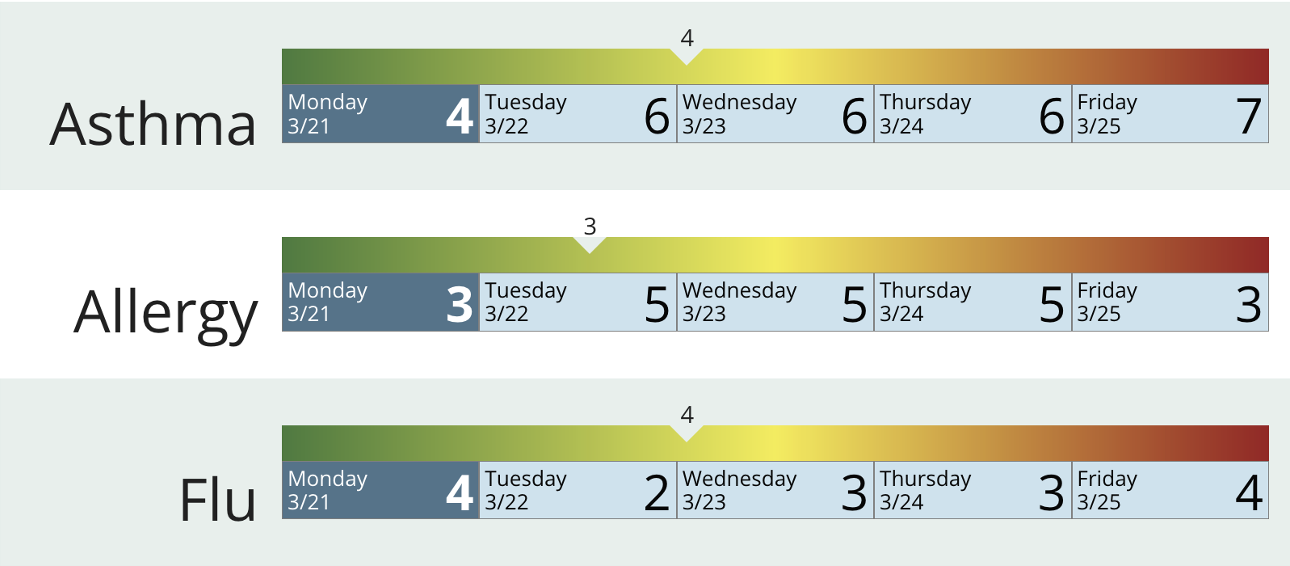 How to Monitor the Weather to Manage Allergies and Asthma
How to Monitor the Weather to Manage Allergies and Asthma
If you live with asthma or allergies, managing your triggers to avoid symptom flare-ups is a part of everyday life. Environmental allergens such as pollen and mold are common triggers. You may not realize that changes in the weather can also affect your asthma and allergies.
Temperature changes, humidity changes, thunderstorms, rain and wind can inflame the airways, leading to flare-ups. People with respiratory conditions tend to breathe through the mouth and doing so brings weather-related irritants directly to the lungs. It also doesn’t allow your nose to regulate the humidity and air temperature.
What the Forecast Means
- Asthma index: a combination of weather factors that can trigger asthma symptoms. A higher index value means more people with asthma will potentially be affected by weather factors, such as changes in temperature or allergens in the air.
- Allergy index: a combination of weather factors and plant growth stages that increase the release and airborne spread of pollen. A higher index value represents a high pollen count and/or spread of pollen.
- Flu index: a combination of historical flu data and temperatures. The index represents the degree to which transmission of the virus is favorable. A higher flu index means the spread of a flu virus is very favorable, assuming the disease is present.
The colored bars atop each index represent where the data currently stands based on the forecast date. Each index is scaled from 0 to 10, with 0 being very low and 10 being very high. The further to the right the tick mark is, the higher the index level.
© 2021 Allergy and Asthma Network

Last updated : 3/21/2022